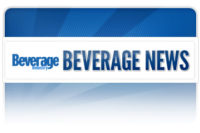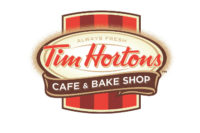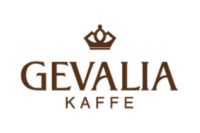Premium outlook for coffee

Since its January release, Kraft Foods Inc.’s premium brand Gevalia has already achieved sales of more than $30 million for the 52 weeks ending July 8 in SymphonyIRI measured channels.

Made with 20 percent coconut water, RealBeanz released nutrient-enhanced ready-to-drink coffees with the launch of Dark Roast Iced Coffee made with Coconut Water and Cappuccino Iced Coffee made with Coconut Water.








Economic times might be helping to entice consumers to opt for in-home coffee consumption; however, consumers are finding ways to ensure that their cups of coffee at home are just as enjoyable.
According to an August report from Santa Monica, Calif.-based IBISWorld titled “Coffee Production in the U.S.,” coffee revenue for the five years leading up to 2012 is expected to increase at an average rate of 5.2 percent a year to $9.6 billion in 2012. The market research firm’s report credits a number of factors for this growth, including an increase in raw coffee prices, passing along those prices to consumers, promotion of the health benefits of coffee, which are supported by science, and the expansion of coffeehouses, which have revived demand for the category. However, the report notes that because coffee bean prices are anticipated to decrease, revenue is expected to grow only 1 percent in 2012 compared with the 5.2 percent estimated for the five-year period ending in 2012.
IBISWorld reports that these increases took place during a global recession coupled with rising unemployment and waning consumer confidence.
“I don’t think [coffee price increases] have much of an impact in the fact that it’s become a routine,” says Jonas Feliciano, beverage analyst for Chicago-based Euromonitor International. “What consumers may do is they may switch away from premium brands to a lower cost if pricing becomes too high, but otherwise I think because it’s part of a consumer’s daily routine, the increase in price isn’t affecting them as much.”
And the numbers seem to support that assessment. Ground coffee sales were nearly $3 billion for the 52 weeks ending July 8 in supermarkets, drug stores, gas and convenience stores, and mass merchandisers, excluding Walmart, according to Chicago-based SymphonyIRI Group. That nearly $3 billion is a 10.6 percent increase versus the same time period the previous year.
Among the Top 10 ground coffee brands, Orrville, Ohio-based J.M. Smucker Co.’s Folgers brand remains in the No. 1 position with $840 million in sales, a 9.2 percent increase, according to SymphonyIRI data. All brands in the Top 10 reported an increase in sales with Chock Full O' Nuts, a brand of Massimo Zanetti Beverage USA, Portsmouth, Va., registering the largest increase of 30.8 percent during that time period. Private label also fared well with an 11 percent increase resulting in more than $315 million in sales, based on SymphonyIRI data.
The premium and super-premium brands also continue to showcase positive numbers. Seattle-based Starbucks Coffee Co.’s branded products were up 4.7 percent for nearly $267 million in revenue in supermarkets, drug stores, gas and convenience stores, and mass merchandisers, excluding Walmart.
Those sales include Starbucks’ latest entry into the coffee market with its Blonde Roast, which was released in January to meet the needs of the 40 percent of coffee drinkers in the United States who reported preferring a lighter roast coffee, the company says.
In addition to ground, the product launched in whole bean, K-Cups, Via instant coffee and brewed options concurrently in grocery and Starbucks retail channels in the United States.
Also experiencing positive sales in the premium and super-premium ground coffee segment, J.M. Smucker Co. brand Dunkin’ Donuts’ sales were up 5.9 percent for nearly $188 million during that same time period. Emeryville, Calif.-based Peet’s Coffee & Tea branded coffee and New Providence, N.J.-based Eight O’Clock Coffee Co.’s branded coffee sales were up 15 percent and 12.1 percent for $78.8 million and $72.7 million, respectively.
Five spots shy of making the Top 10 was Northfield, Ill.-based Kraft Foods Inc.’s premium brand Gevalia. Previously available online only, in January Gevalia coffee became available at retail in the United States for the first time. The brand has been in existence for more than 150 years and is available in 10 varieties: Traditional Roast, Traditional Roast Whole Bean, House Blend, House Blend Decaf, French Roast, French Roast Whole Bean, Colombia, Espresso Roast, Vanilla and Chocolate Mocha.
In its “Coffee Production in the U.S.” report, IBISWorld notes that the premium market for coffee continues to gain ground.
“Consumers educated themselves more about coffee beans and traded up in quality over the five years to 2012,” the report states.
The market research firm cites a 2008 survey by the National Coffee Association, which revealed that 17 percent of the adult population consumed a gourmet beverage on a daily basis. That demographic particularly included individuals aged 25 to 29, according to the report. Although growth stalled during the recession, sales picked up in 2010, it adds.
“Quality will continue to dominate as a deciding factor for consumers,” the IBISWorld report states. “As disposable income rises over the next five years at an average annual rate of 1.8 percent, consumers are expected to pay more for high-quality coffee.”
IBISWorld credits the growing availability of a broad range of coffee varieties in supermarkets and other retail outlets for this demand and awareness. It also notes that expansion of coffeehouses and their sociological implications have provided opportunities for chain outlets like Starbucks.
The premium-ization of coffee also has benefited whole bean sales, according to IBISWorld. The segment has increased gradually from 2008 to 2012 and now accounts for 13.4 percent of the category’s revenue, it adds.
Whole coffee bean sales were up 7.4 percent for $353 million in sales for the 52 weeks ending July 8 in supermarkets, drug stores, gas and convenience stores, and mass merchandisers, excluding Walmart, according to SymphonyIRI.
The segment was led by Starbucks with nearly $105 million in sales, a 6.7 percent increase.
Single explosion
Although IBISWorld reports that ground coffee makes up 73.6 percent of the category’s sales, it’s the more niche segments that have been receiving most of the buzz. These niche segments include concentrated coffee and substitutes, which companies have opted to invest in to provide convenience to the American consumer, according to the IBISWorld report.
This segment has been the fastest growing segment in the last five years, IBISWorld estimates, with sales rising 37.1 percent in 2008, and the market research firm expects the segment has grown more than 5 percent each year since 2007.
Categorized in this segment is instant coffee. According to SymphonyIRI, instant coffee sales were up 5.3 percent for $488 million in sales for the 52 weeks ending July 8 in measured channels. The segment saw increases in sales from Folgers, Stamford, Conn.-based Nestlé USA’s Nescafé Classico and Starbucks Via. Nescafé Taster’s Choice and Kraft Foods Inc.’s Maxwell International and Maxwell House brands experienced decreases of 0.9 percent, 2.8 percent and 1.9 percent, respectively.
Also showcasing strong growth in the coffee category is the single-cup coffee segment. Overall single-cup sales are up 109.3 percent for more than $735 million in SymphonyIRI measured channels.
Euromonitor’s Feliciano says the format change with single-cup offerings has been a driver in terms of value.
“I really think that you’re seeing value increases because of it,” he says. "Single-serve is able to increase the cost per cup that a consumer would normally have while also decreasing waste. You’re also seeing the coffee value for the U.S. market increase in terms of pricing.”
Feliciano notes that in 2011, coffee broke the $9 billion mark at retail. “I think that the reason for that is not necessarily that you’re seeing consumers drink more coffee, but they’re spending more on coffee because of something like single-serve,” he says.
Waterbury, Vt.-based Green Mountain Coffee Roasters (GMCR) has one of the main drivers of the single-cup segment with its Keurig Single-Cup Brewing System.
In GMCR’s third-quarter fiscal year 2012 results, the company stated that approximately 89 percent of consolidated third-quarter sales were from the sales of Keurig brewers, single-serve packs and Keurig-related accessories, with the remainder of sales consisting primarily of bagged coffee sales and office coffee service business sales. It also reported that single-serve packs accounted for $638 million in sales for the 13 weeks ending June 23, a 31 percent increase compared with the same time period last year.
The Green Mountain-branded variety leads the list of top single-serve coffee brands with nearly $209 million in sales, nearly an 83 percent increase, for the
52 weeks ending July 8 in measured channels, according to SymphonyIRI data. GMCR K-Cup offerings for Tully’s, Donut House, Newman’s Own and Caribou brands also posted strong increases at 48.6 percent, 227.3 percent, 74.8 percent and 60.8 percent, respectively.
J.M. Smucker Co.’s Folgers Gourmet Selection K-Cups took the No. 2 spot for top single-serve coffee brands with $105 million in sales during that time period.
Released in November 2011, Starbucks K-Cups have taken the No. 3 position in the single-serve market in SymphonyIRI measured channels. Starbucks coffee K-Cup portion packs were released in Breakfast Blend, Pike Place Roast, House Blend, Sumatra and French Roast varieties. Since their original release, Starbucks has introduced the sale of K-Cups in its Starbucks retail stores.
Starbucks and GMCR also announced earlier this year the expansion of their partnership for the manufacturing, marketing, distribution and sale of Starbucks-branded Vue packs for GMCR’s Keurig Vue Brewer.
Starbucks and GMCR expect GMCR to distribute Starbucks Vue packs initially in specialty, department store and mass merchandise retailers in the United States as well as on GMCR’s consumer-direct websites by this fall.
“The success of our Keurig Single-Cup Brewing System has been driven by choice — choice of coffee brands and beverage varieties, and choice of brewer features and models. With the introduction of Vue, we’ve expanded that choice even further, giving consumers a brewer with [the] features and functionality they’ve told us they value most,” said Lawrence J. Blanford, GMCR president and chief executive officer, in a statement. “We believe the customization offered by Vue and its appeal as a premium-beverage solution will resonate with loyal Starbucks consumers, and we’re pleased to have Starbucks coffee as a brand option in the system as we move forward.”
But its strategic partnership with GMCR isn’t the only venture Starbucks has in the single-cup segment. Earlier this year, the company announced plans for a holiday-time release of the Verismo, a home-brewing system that crafts Starbucks-quality espresso beverages, such as lattes and americanos, as well as brewed coffee.
Through a strategic relationship with Germany-based Krueger GmbH & Co. KG, Starbucks will market and sell the premium Verismo system by Starbucks and Starbucks-sourced 100 percent Arabica coffee and milk pods this fall online and at select Starbucks retail stores as well as specialty retailers across the United States, Canada and in select international markets, the company says.
“The premium single-cup segment is the fastest-growing business within the global coffee industry,” said Howard Schultz, Starbucks chairman, president and chief executive officer, in a statement. ”We have long believed that the biggest prize within the segment is a high-pressure system that would give us the opportunity to deliver Starbucks-quality espresso beverages at home and at work for customers who desire the Starbucks espresso experience outside of our stores.”
Innovating hybrids
Although the instant and single-serve segments have been flourishing as of late, the ready-to-drink (RTD) segment has been taking the lead when it comes to innovative new products.
Euromonitor’s Feliciano says the RTD coffee segment has a hybridization movement to landscape mixing with teas, juices, energy drinks and even coconut water.
RealBeanz, Brooklyn, N.Y., expanded its line of same-named nutrient-enhanced RTD coffees with the launch of Dark Roast Iced Coffee made with Coconut Water and Cappuccino Iced Coffee made with Coconut Water. Both varieties are made with 20 percent coconut water as well as premium-brewed beans and artificial growth-hormone-free milk. Each bottle contains 70 calories.
At nearly 14 percent growth, the RTD coffee market experienced $944 million in sales for the 52 weeks ending July 8 in SymphonyIRI measured channels.
Under the North American Coffee Partnership (NACP) between Purchase, N.Y.-based PepsiCo and Starbucks, brands Frappuccino, Doubleshot, Seattle’s Best Cappuccino and Starbucks Doubleshot occupy the Top 4 spots of the top RTD coffee segment. Rounding out the Top 5 is private label. Frappuccino, Doubleshot, Seattle’s Best Cappuccino and private label all posted double-digit gains, according to SymphonyIRI data.
Not cracking the Top 5 but still showing strong gains is Illy Issimo, part of Ilko Coffee International, a global joint venture between Illycaffé and The Coca-Cola Co., Atlanta. Illy Issimo sales increased 109 percent for $9 million, SymphonyIRI says. The brand recently increased its size to 9.5 ounces to give consumers an extra ounce in each bottle. BI
Looking for a reprint of this article?
From high-res PDFs to custom plaques, order your copy today!












